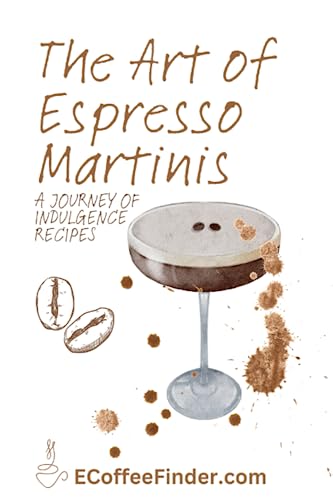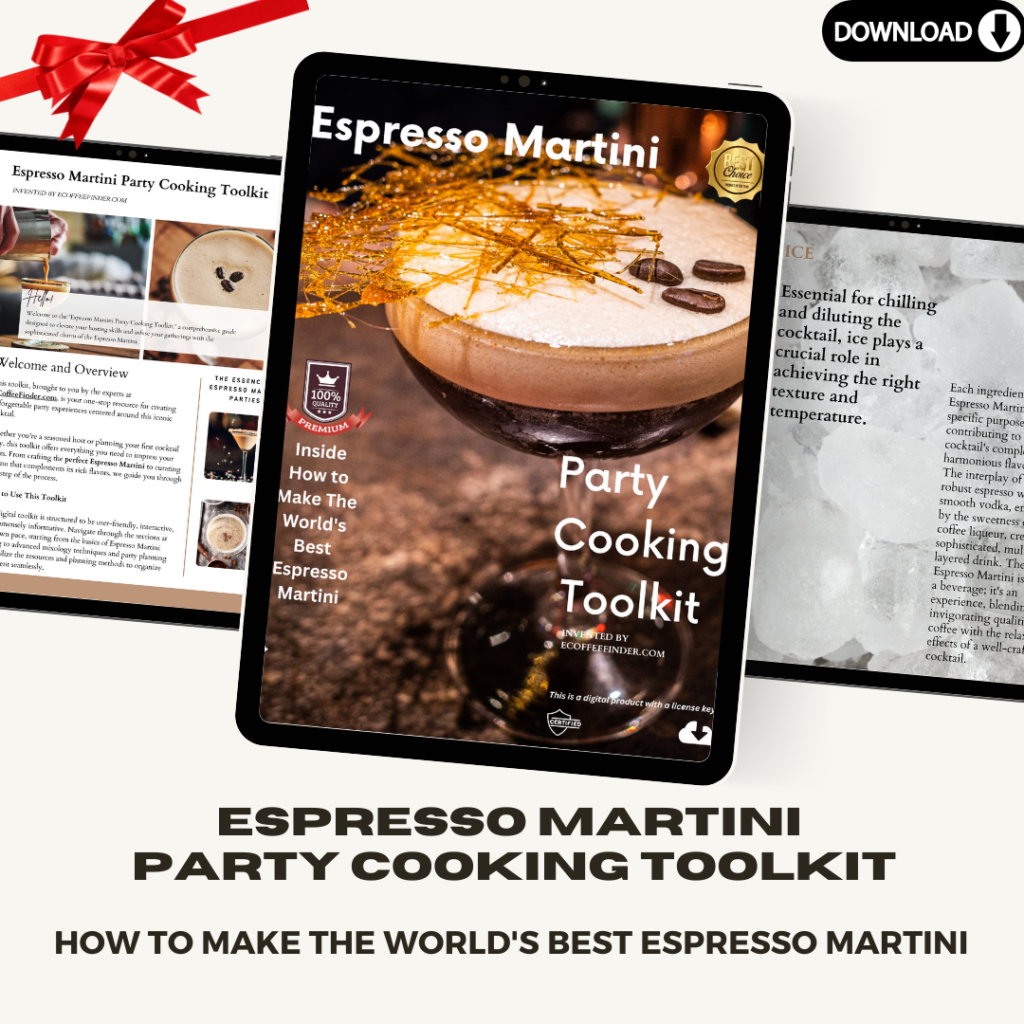The Espresso Martini: A Journey from 1980s London to Today’s Trend
The Espresso Martini, a cocktail that elegantly blends the worlds of coffee and spirits, has journeyed from a creative concoction in a bustling 1980s London bar to a globally cherished classic. This article delves into the rich history of this beloved drink, tracing its origins, evolution, and the cultural significance it holds today.
The Birth of Espresso Martini in 1980s London
In the vibrant cocktail scene of 1980s London, a new star was born. The Espresso Martini, originally crafted by legendary bartender Dick Bradsell, was a response to a now-iconic request: “Wake me up, and then f**k me up.” Bradsell’s genius lay in combining vodka, coffee liqueur, sugar syrup, and freshly brewed espresso, resulting in a drink that was both invigorating and indulgent. This section will explore the cultural backdrop of 1980s London that set the stage for this creation.
Espresso Martini’s Global Journey
From its London roots, the Espresso Martini began its global conquest, capturing the palates of cocktail enthusiasts worldwide. This section will trace the drink’s journey, highlighting how it adapted to different cultures and tastes, leading to a myriad of variations and solidifying its status in the cocktail pantheon.
#Sponsored

Espresso Martini in America: A New Chapter
“Espresso Martini in America: A New Chapter” refers to the recent resurgence and evolution of the Espresso Martini in the United States, marking a significant trend in the cocktail scene. This resurgence is not just about the drink itself, but also reflects broader shifts in American culinary and social culture. Here’s a detailed exploration of this phenomenon:
Historical Context and Resurgence
- Origins and Initial Popularity: Although the Espresso Martini was created in London in the 1980s, it quickly found its way to the U.S. where it enjoyed popularity in the 1990s and early 2000s, particularly in cosmopolitan areas.
- Recent Resurgence: In recent years, there’s been a notable resurgence of the Espresso Martini in America. This revival can be partly attributed to the craft cocktail movement, which embraces both classic and innovative cocktails, and the burgeoning artisan coffee culture.
Factors Contributing to the New Chapter
- Craft Cocktail Movement: The rise of craft cocktail bars in the U.S. has led to a renewed interest in classic cocktails, including the Espresso Martini. Bartenders are experimenting with high-quality ingredients and unique twists on the traditional recipe.
- Coffee Culture Integration: America’s growing coffee culture, characterized by a preference for high-quality, artisanal coffee, has dovetailed with cocktail trends. The Espresso Martini offers a perfect platform for showcasing premium espresso.
- Social Media and Trendsetting: The visual appeal of the Espresso Martini, especially its creamy, frothy top, makes it very photogenic for social media platforms. Its resurgence has been partly driven by its popularity among influencers and trendsetters.
- Consumer Preferences: There’s a growing consumer preference for drinks that offer a combination of flavors and experiences. The Espresso Martini blends the stimulating effects of caffeine with the relaxing properties of alcohol, fitting well with the contemporary lifestyle.
Regional Variations and Innovations
- Local Flavors: In different parts of the U.S., bartenders are adding local twists to the Espresso Martini, using regional spirits and locally roasted coffee. This has led to a diverse range of variations that reflect local tastes and ingredients.
- Seasonal and Artisanal Ingredients: Seasonal variations, incorporating ingredients like pumpkin spice or peppermint during the holiday season, are becoming popular. There’s also an emphasis on using artisanal and organic components.

Broader Cultural and Social Implications
- Lifestyle and Status Symbol: The Espresso Martini has become more than just a cocktail; it’s a symbol of sophistication and urbanity. It’s often associated with a fashionable and modern lifestyle.
- Evening and Nightlife Culture: The drink has carved out a niche in the evening and nightlife scene, popular as a pre-dinner aperitif or a post-dinner digestif, bridging the gap between the coffee and cocktail hours.
- Health and Wellness Considerations: As health and wellness trends evolve, so do the ingredients in Espresso Martinis. There’s an increasing demand for options with lower sugar content, organic ingredients, or even non-alcoholic (‘mocktail’) versions.
In America, the Espresso Martini is experiencing a renaissance that reflects current trends in the culinary world, consumer preferences, and social habits. This “New Chapter” is characterized by innovation, regional diversity, and a fusion of coffee and cocktail cultures. The drink’s resurgence is a testament to its timeless appeal and its ability to adapt to the evolving tastes and lifestyles of American consumers.
The Symbolism and Artistry: Beans and Beyond
“The Symbolism and Artistry: Beans and Beyond” in the context of Espresso Martinis extends the conversation to the unique intersection of coffee and cocktail culture, with a particular focus on this iconic drink. Here’s a detailed exploration of how the Espresso Martini, through its ingredients and presentation, embodies deeper symbolism and showcases artistic expression:
Symbolism in Espresso Martinis
- Fusion of Cultures: The Espresso Martini blends the rich, bold flavors of coffee with the smooth, sophisticated essence of vodka and coffee liqueur. This fusion symbolizes the melding of different cultural elements – the traditional Italian espresso meets the modern cocktail scene.
- Balance and Harmony: In an Espresso Martini, the bitterness of the espresso is balanced by the sweetness of the liqueur and the potency of the vodka. This balance can be seen as a metaphor for harmony in complexity, blending diverse elements to create a cohesive whole.
- Energy and Elegance: The combination of caffeine from espresso and alcohol symbolizes a duality of energy and relaxation, mirroring the fast-paced yet refined aspects of modern life. It’s a drink that energizes yet soothes, perfect for evening social gatherings.
- Transition and Transformation: Espresso Martinis are often associated with evening social scenes, transitioning from the busy daytime to a more relaxed, nocturnal ambiance. This transition mirrors the transformation of the coffee bean into a sophisticated cocktail ingredient.
Espresso Martini Key Points
| Section | Key Points |
|---|---|
| Introduction | Overview of Espresso Martini’s popularity and significance. |
| Birth in 1980s London | Creation by Dick Bradsell in response to a unique request, reflecting the era’s culture. |
| Global Journey | Spread from London to worldwide fame, adaptation to local tastes. |
| Espresso Martini in America | Reception and evolution in the United States, becoming a staple in bars. |
| Symbolism and Artistry | Significance of coffee bean garnishes (3, 4, or 2 beans) and their symbolism. |
| National Espresso Martini Day | Celebration and significance of this dedicated day. |
| Influence on Cocktail Culture | Impact on modern trends, resurgence of coffee-based cocktails. |
| Espresso Martini Expert GPT | Introduction of the AI tool for enthusiasts, linking to related resources. |
| Conclusion | Summary of the Espresso Martini’s journey and its enduring appeal. |
| FAQ Section | Addresses origin, symbolism, preferred liquor, effects on the body, and interesting facts about Espresso Martinis. |
Artistry in Espresso Martinis
- Culinary Craftsmanship: The creation of an Espresso Martini requires skill and precision. From perfectly brewing the espresso to achieving the right mix of ingredients, it’s a testament to the artistry in cocktail making.
- Visual Appeal: The classic presentation of an Espresso Martini, with its rich dark color topped with a creamy foam, accented occasionally with coffee beans or artistic foam designs, is visually striking. This aesthetic appeal is a crucial element of its allure.
- Innovative Variations: Bartenders often put their unique spin on the Espresso Martini, adding ingredients like spiced syrups, flavored liqueurs, or even garnishes that reflect local or seasonal influences, showcasing culinary creativity.
- Sensory Experience: The Espresso Martini delivers a multi-sensory experience – the aroma of the coffee, the visual appeal of the drink, the texture of the foam, and the complex flavors. This sensory richness reflects the artistry involved in its creation.
Beyond the Drink: Broader Implications
- Lifestyle Symbol: The Espresso Martini has become more than a drink – it’s a symbol of a contemporary, sophisticated lifestyle, often associated with urban chic and modern cocktail culture.
- Social Connector: Like coffee, the Espresso Martini often plays a role in social gatherings, facilitating connections and conversations, thus symbolizing social engagement and enjoyment.
- Sustainable and Ethical Considerations: In line with modern trends, the choice of coffee and spirits in an Espresso Martini can reflect a commitment to sustainability and ethical sourcing, adding deeper value to the drink.
In the realm of Espresso Martinis, “Beans and Beyond” signifies not only the journey of coffee beans into a beloved cocktail but also the broader cultural, social, and artistic narratives intertwined with this iconic drink. From its symbolic representation of modern life’s duality to its role as a canvas for culinary artistry, the Espresso Martini is a drink that encapsulates much more than its ingredients.
#Sponsored

National Espresso Martini Day: A Celebration of Flavor
National Espresso Martini Day is a relatively recent addition to the list of food and drink-themed days. Here’s a brief history and overview:
- Emergence of National Espresso Martini Day: The exact origin of National Espresso Martini Day is not well-documented. However, it likely emerged in the 2000s or 2010s, in line with the growing trend of celebrating food and beverages on specific days. These celebratory days often originate from marketing initiatives by brands or from social media trends.
- Celebration and Popularity: National Espresso Martini Day celebrates the unique combination of coffee and alcohol, embodying the energy of espresso and the spirit of a martini. It has gained popularity particularly among coffee and cocktail enthusiasts. The day is marked by people enjoying Espresso Martinis at bars, cafes, and at home. It also often features promotions and special events at hospitality venues.
- Cultural Impact: The day highlights the ongoing popularity of coffee-infused alcoholic beverages and the creative blending of different culinary worlds. It reflects a broader interest in gourmet coffee culture and innovative cocktail crafting.
- Date of Celebration: The specific date for National Espresso Martini Day might vary slightly by region or promoter, but it generally serves as a day for enthusiasts to appreciate and enjoy this unique cocktail.
National Espresso Martini Day, therefore, represents more than just a celebration of a specific drink; it symbolizes the fusion of coffee culture with the world of mixology, and its growing popularity is a testament to the enduring appeal of this combination.
Espresso Martini’s Influence on Modern Cocktail Culture
The Espresso Martini has had a significant impact on modern cocktail culture, influencing trends, consumer preferences, and bartending practices in several ways:
1. Fusion of Coffee and Alcohol
- Innovation in Flavor Profiles: The Espresso Martini is one of the most successful examples of combining coffee and alcohol. This fusion has inspired a wave of creativity, leading to the creation of other coffee-based cocktails.
- Appeal to Coffee Enthusiasts: As coffee culture has grown, so has the appeal of coffee-infused cocktails. The Espresso Martini caters to a demographic that appreciates both the complexity of espresso and the sophistication of cocktails.
2. Revival of Classic Cocktails with a Twist
- Modern Twist on Traditional Ingredients: While martini traditionally refers to a gin or vodka-based drink with vermouth, the Espresso Martini reimagined the concept. This approach paved the way for modern reinterpretations of classic cocktails.
- Inspiration for Experimentation: Bartenders worldwide have been inspired to experiment with classic recipes, incorporating contemporary ingredients and techniques.
3. Cocktail Craftsmanship and Presentation
- Emphasis on Technique: The preparation of an Espresso Martini requires specific techniques, particularly in achieving the characteristic creamy foam on top. This has emphasized the importance of skill in cocktail preparation.
- Visual Appeal: The striking appearance of the Espresso Martini, with its dark body and creamy foam, has set a standard for the visual presentation of cocktails.
4. Impact on Bar and Café Culture
- Blurring Lines Between Bars and Cafés: The Espresso Martini is at home in both bars and cafés, encouraging a crossover between these two traditionally separate venues.
- Day-to-Night Appeal: The cocktail’s caffeine content makes it suitable for different times of the day, from a late afternoon pick-me-up to an evening drink.
5. Consumer Trends and Demographics
- Attracting a Younger Crowd: The Espresso Martini has a particular appeal among younger consumers who are looking for innovative and Instagrammable drinks.
- Versatility in Occasions: It’s suitable for a range of occasions, from brunches to dinner parties, adding to its widespread appeal.
6. Global Popularity and Variations
- International Adoption: The Espresso Martini has gained popularity globally, with variations appearing in different countries, reflecting local tastes and ingredients.
- Seasonal and Regional Variations: Bartenders often add seasonal ingredients or local spirits to create unique variations, further enriching cocktail culture.
7. Influence on the Beverage Industry
- Ready-to-Drink (RTD) Market: The popularity of the Espresso Martini has led to its inclusion in the growing RTD cocktail market.
- Cocktail Kits and Home Mixology: Its popularity has also fueled the trend of home cocktail making, with Espresso Martini kits and recipes becoming popular.
The Espresso Martini’s journey from a quick fix in a London bar to a globally celebrated cocktail is a testament to its timeless appeal and versatility. As we raise our glasses, we not only enjoy a delicious mix but also partake in a rich history that continues to evolve.
The Espresso Martini FAQ Section
- Where did espresso martini originate?
- The Espresso Martini was born in 1980s London, created by bartender Dick Bradsell.
- Why are there 3 beans in espresso martini?
- Three beans traditionally represent health, wealth, and happiness.
- What does espresso martini symbolize?
- It symbolizes a perfect blend of energy and relaxation, reflecting the fast-paced lifestyle of its origin city.
- What kind of person drinks espresso martini?
- It’s favored by those who appreciate a sophisticated, yet spirited cocktail experience.
- What is a fun fact about espresso martinis?
- It was originally named the “Vodka Espresso” before gaining its current moniker.
- What does an espresso martini do to your body?
- The caffeine provides a burst of energy, while the alcohol offers relaxation, making it a popular choice for an evening out.
- What liquor is best for an espresso martini?
- Vodka is the traditional choice, but variations with rum or bourbon are also popular.

